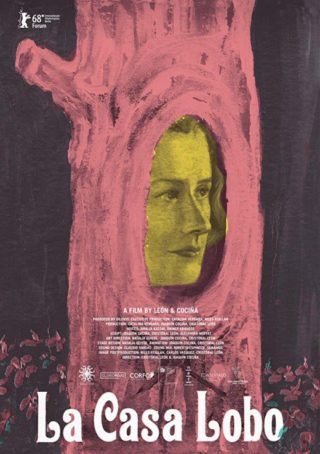 Quite simply the state of the art in visionary animation, a feature-length Chilean reverie that in strangeness and invention can stand alongside the early work of David Lynch. Made over a five year period with human-sized sets and props (exhibited in museums during the film’s production), it’s as insanely ambitious as any animated film ever made.
Quite simply the state of the art in visionary animation, a feature-length Chilean reverie that in strangeness and invention can stand alongside the early work of David Lynch. Made over a five year period with human-sized sets and props (exhibited in museums during the film’s production), it’s as insanely ambitious as any animated film ever made.
The subject is a bizarre cult, known as The Colony, that’s based on the infamous German run Chilean “Torture Colony” Colonia Dignidad. A live action prologue fills us in on The Colony’s history: the place exists in the South Chilean wilderness and is stocked with German emigres, who reside “the way human beings were truly meant to live on this earth.” This of course hasn’t stopped the surrounding community from viewing The Colony with suspicion.
Following this is a textual introduction illustrated with primitive black and white animation. It’s here that we’re introduced to young Maria, a resident of The Colony who’s punished rather severely for letting three pigs loose. She promptly escapes from The Colony, and the illustrations give way to a more sophisticated animation style that combines traditional hand-drawn cartooning, Claymation and live action, all of it presented in a single 60-plus minute take.
Depicted is a young girl, the aforementioned Maria. Voice-overs fill us in on the particulars of her escape from The Colony and subsequent flight through the wilderness. She finds shelter in a deserted house, together with two of the pigs she set free, which she promises to transform into “beautiful creatures.” But a ravenous wolf, i.e. the specter of The Colony’s overseers, haunts her in the guise of a malevolent eye that periodically appears in the walls and furniture of Maria’s makeshift home.
Before long Maria begins to take on the autocratic tendencies of The Colony’s overseers as her pig companions, whom she christens Ana and Pedro, transform into human(oid) children. A freak accident causes the house to burn down and the pig-children to die in the fire, but Maria, who has by now fully descended into madness, isn’t ready to let them go. She resurrects her loved ones, and the three of them grow into an apparently “happy” family. That, however, doesn’t stop them from falling prey to starvation and the specter of cannibalism as Maria, still terrified of that ever-present wolf, keeps everyone locked inside the house.
This film is first and foremost a mind-boggling technical feat, from its settings, situated amid interior backgrounds that constantly transform, to its human characters, which likewise have a tendency to compulsively metamorphose—and occasionally dissolve altogether and/or take the form of moving wall paintings. This makes for quite a few indelible images: a dinner table session in which the participants are made to look indistinguishable in color and texture from the food they’re eating, self-opening Christmas presents, a bedroom that sprouts vegetation, a painted face blowing up a three dimensional balloon, etc.
Yet as gorgeously rendered as all this is, darkness is never too far from the surface. Note the confinement motif that recurs in the form of ropes, straps, tape and bars that are constantly shadowing and entrapping the heroine and her charges. It makes for a dazzling yet profoundly haunting film whose technical virtuosity seems show-offy at times, but never compromises the sense of horror and apprehension suffusing its every image.
Vital Statistics
THE WOLF HOUSE (LA CASA LOBO)
Diluvio/Globorojo Films
Directors: Cristobal Leon, Joaquin Cocina
Producers: Catalina Vergara, Niles Atallah
Screenplay: Joaquin Cocina, Cristobal Leon, Alejandra Moffat
Cinematography: Joaquin Cocina, Cristobal Leon
Editing: Joaquin Cocina, Natalia Geisse, Cristobal Leon
Cast: Amalia Kassai, Rainer Krausse
